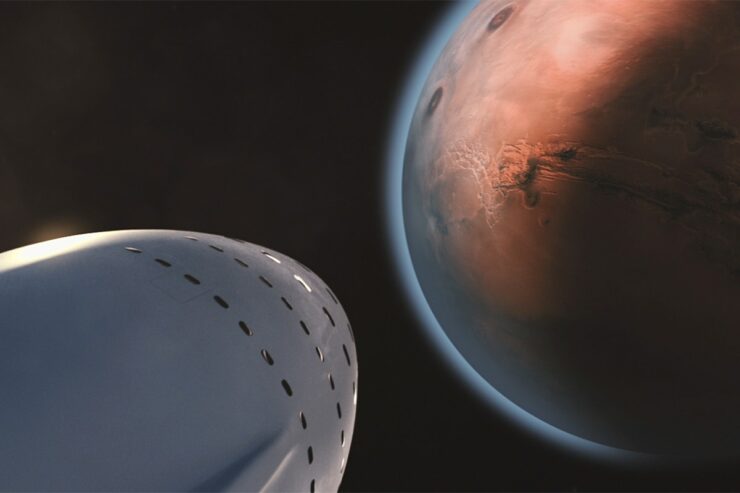Keeping in trend with the space missions rolling out in 2021, the United Arab Emirates is the latest country that put an orbiter around Mars. The orbiter called Hope was launched in July 2020 and represents an important milestone for the small Middle Eastern country being the first interplanetary mission led by an Arab state.
UAE Mars Orbiter Mission Overview
The spacecraft spent 7 months travelling towards the red planet and reached it in February this year, making it the 5th country to reach Mars. It was launched from Japan’s Tanegashima Space Center using a Japanese rocket – the Mitsubishi Heavy Industries H-IIA.
It will study the Martian atmosphere and climate using various instruments which we will talk about shortly. According to the country’s prime minister, the mission seeks to send 3 messages:
- “The first message is for the world: that Arab civilisation once played a great role in contributing to human knowledge, and will play that role again;
- The second message is to our Arab brethren: that nothing is impossible, and that we can compete with the greatest of nations in the race for knowledge.
- The third message is for those who strive to reach the highest of peaks: set no limits to your ambitions, and you can reach even to space”
The UAE Mars orbiter is a product of the collaboration between the LASP (Laboratory for Atmospheric and Space Physics), the UAE’s space agency, Arizona State University and the University of Colorado.
More precisely, the mission seeks to create a global picture of how the Martian atmosphere changes over days, seasons and years which is a very important milestone in our understanding of the red planet, as studies have generally stretched over short periods of time.
It will also look for evidence and reasons of why the Martian atmosphere has become so thin, as geological data suggest that it was once not so different from Earth’s.

What Can It Do?
Firstly, it is important to note that Hope was assembled at LASP in Boulder, Colorado where Emirati engineers were working together with their American counterparts. It weights 1350 kilograms and is the size of a small car.
To accomplish its scientific objectives, the mission is equipped with three main instruments:
- A camera (EXI) that can take high-resolution images with a spatial resolution of better than 8 km
- An infrared spectrometer (EMIRS) that will be used to examine temperature variations, water vapor and dust in the atmosphere
- An UV spectrometer (EMUS) working in the range of 100-170 nanometers which will be used to study the thermosphere and hydrogen and oxygen content
It can be said that Hope is basically a high-performance weather satellite, which will prove to be quite useful in our understanding of Mars and its past.
A company based in Arizona, US called KinetX Aerospace will provide navigation services for the orbiter and NASA’s Deep Space Network will be used to communicate with the spacecraft and plan operations.
A very interesting aspect is that in November last year, Hope and ESA’s BepiColombo spacecraft sort of ‘met up’ and measured each other’s distribution of hydrogen in space. BepiColombo was on its way to Mercury and the opportunity arose so that the two spacecraft had a clear line of sight between them.
Another factor that’s good to know is that the Indian Space Agency held meetings with UAE’s Mars orbiter team, shared knowledge and helped in the launch of the mission.
It is a very interesting journey ahead, so it is very much worth it to follow what Hope will tell us in the future. Luckily, we are keeping an eye out for it, so stay tuned, we’ll let you know when something interesting happens.












